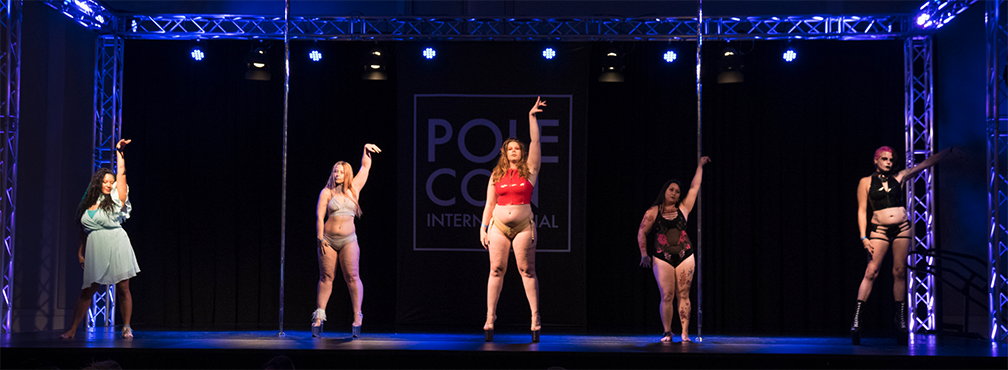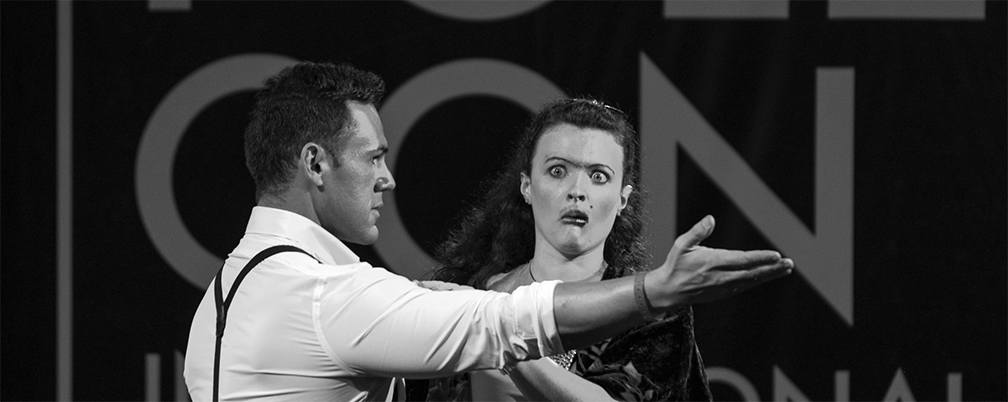
Pole as Activism
Activism is defined as “the policy or action of using vigorous campaigning to bring about political or social change”. Activism cannot come without a desire to understand, so it is my goal to talk about both understanding and activism in this post. For me, these doesn’t often come in the form of creating signs or going to marches and demonstrations (a popular image what “activism” means in our culture, yes?), though events such as those are essential and I have been known to participate on occasion. I feel that my voice and ears are better suited on the micro level. My energy is best used in small communities with people I can get to know intimately. I believe that this conviction is, in large part, the reason why I am a teacher; I experience the first hand benefits of my students participation in a variety of discourses on a daily basis. More on this later.
My background is in fine art. I have addressed movement in my artwork for the last 13 years. This spans from process oriented sculptures that examine my relationship with material and the intimacy that I experience in the studio when I create small objects, to concept driven video art that utilizes editing to highlight the decision of a human to record their own movement, to motion tracking animation, to (most recently) live performance. Pole has appeared on and off in my work for the last 8 years. My relationship to pole and the visual language I use to discuss that relationship has ranged from processing deep sadness to empowerment to criticism. I would like to talk about how I use pole specifically as a medium for sorting out the world around me. Below you will find a list of 10 ways I have used pole as a means of activism and understanding. I would love to know how you use pole as a means by which you encourage or participate in the world around you.
1. Cultural Transmission
Cultural Transmission refers to how we learn and pass on information. This is to say that our capacity to create new responses to an environment and communicate specific behaviors enable us to transmit information across generations. What I mean is this: The very decision to pole dance is in and of itself a form of activism. By simply BEING pole dancers, we are making a political statement about a number of issues, which you will see below.
2. Teaching
This is a big one. Teaching is truly a calling for me and if I could not teach, I would be lost. For me, sharing and discussing ideas is an essential aspect of activism and understanding. My knowledge is not property, it is simply on loan to me. I have a gift of being able to explain concepts/ideas by using visual and spoken language and then listening and guiding students toward a vision of their own. Fostering these relationships and employing this gift I have been given in the pole studio and classroom is perhaps the biggest reach I have in terms of activism. Being taught is also a necessary way to refill the bucket of energy needed to be a productive instructor, which is why its important to have good teachers as a way to further ones own teaching practice. My friend Kat does this for me, and I am eternally grateful for her.
3. Sexual Politics
Despite all of the amazing things women are doing in the world, we are still not yet postfeminism, so I feel that I must bring up sexual politics in pole as a form of activism. Pole dancing in a space that is controlled by the dancer and places her autonomy as central to the performance experience is absolutely an act of defiance in our culture. The idea that a woman can exist as a sexual being free from the weight or demand of the male gaze if she so chooses is a statement.
Boom. ‘Nuff said.
4. Body Inclusivity
In my teaching, I would like to think that my specialty is in beginners and plus size dancers. With the increasing popularity of pole, I think it is becoming increasingly easy to leave folks behind. Pole is progressing fast, and this is amazing and necessary! However, with the double remy sit rainbow marchenko double back flip with a twist while simultaneously pouring a cup of tea combos flooding Instagram feeds everywhere, for me, I would like to make an effort to keep included and invited folks that consider themselves beginners, plus sized, “too old”, and of varying gender identities. I have an awareness of my thin privileged hetero presenting womanness and I can’t not extend my hand to those often marginalized and saying “Dude, lets go. This pole shit is going to be an awesome party and we need you and your voice to be part of it”. Sometimes, the best way to participate is by listening, and I would like to hear what a variety of bodies have to say about their pole journey.
5. Sex Work and Sexy Style
I typically maintain a very sexy and exotic dance inspired style in my pole dance. I have no classical training in dance or gymnastics (‘cept for that one time they taught us gymnastics for a few weeks when I was in 5th grade). I did not have the privilege of growing up with access to private lessons or dance recitals. I learned to move in a dangerous and disreputable environment out of absolute necessity. Pole’s origin environment in Western culture has been the cause of deep irreversible damage that I will be processing for years to come, and its decontextualization (the studio) has been the birthplace of my healing. I feel called to maintain exotic dance style as a reminder to myself and my community of pole’s roots and my own identity within it. Much like body inclusivity, class inclusivity matters and sex work is a class issue. If I completely abandoned my sexy style, I would be abandoning my own history, and thus, I would be abandoning myself.
6. Conceptually Driven Performance
Pole, for me, is not only a fun way to stay in shape, but it also functions as an artistic medium and platform for me to speak about issues I care about. Some of these things include sex work activism, intersectionality, sexual politics, sound, and memory. I try to create my pole compositions to not only be formally successful, but conceptually driven in an effort to use the art as a visual voice. One of my favorites is embodying a Femme Fatale character as a way to tackle and challenge cultural ideas of strippers as manipulators and insincere people. If I am on a stage, I might as well speak, right? I was once told of a line of Arabic poetry which, in English, loosely translates to “Be the song of the man who has no song”. These are words to live by.
7. Intimate Exchange and Live Performance
I believe that the single most important feeling that a human can experience is vulnerability. This is often an excruciating emotion, though it is completely necessary, as it seems to be the source fulfillment (and sometimes shame too, yes?). Performing on stage—just you and the pole(s)— can be extremely difficult. However those vulnerable moments on stage while performing a piece create a space where there is great potential for intimacy and connection with your audience. Developing your capacity to create these intimate exchanges encourages introspection. Introspection encourages authenticity, and what greater way is there to be an activist than by being genuine?
8. Fundraisers/Showcases
I have had the privilege of participating in two fantastic fundraisers this year. This first was a sex positive showcase event called Strip-O-Rama, in which all proceeds benefited the LGBT Community where I live via a donation to a queer friendly medical clinic. The second was organized by two very inspiring women, from Richmond, Va. The show was called IN YOUR FACE: Artists Fighting Against Child Exploitation. I am so happy to have been part of a series of fundraisers for such good causes, and also simultaneously get pole “out there” to the public as an awesome artistic medium!
9. Pole As A Challenge of Semantic Memory
Semantic Memory refers to facts, ideas, meanings or concepts that are dependent on our culture. For example, poles, strip clubs, and strippers utilize our semantic memory because we sometimes see poles and strippers together, so our understanding of poles is that they must be used by strippers. In short: pole is more than stripping. Follow? While I have a special place in my heart for strippers, I understand that pole does not have to be soley associated with that environment, however I believe it is IMPORTANT to recognize and respect sex workers. I have recently began to utilize pole as a means by which semantic memory can be challenged. This past November I danced at the PSO NE Aerial Arts Championships and created a piece that was inspired by Butoh style of dance. I used the pole competition platform to create a piece (for the first time in my life) that did not use sexuality as a basis for the performance. If you know me, you know this was a big deal for me and a huge departure from my other work. Non-sexual pole is a concept that is well explored by amazing dancers such as Shaina Cruea, so i recognize that I am not groundbreaking or revolutionary in this idea, however I think it is worth pointing out that modern/contemporary movement on pole can be a form of activism as well.
10. Sound and Embodiment
This one is very very personal and more about understanding than activism. In addition to all of the above (somewhat political) goals I have as a pole dancer, I would also like to attempt to do justice to the medium of sound, which I deeply respect. I spend a lot of time trying to embody sound in my own shapes on the pole. In the dance world, this is called musicality. But to me, its more than translation and awareness of rhythm, its about transmitting and transforming the self into sound. I aim to use pole and my body as means to gain a deeper understanding of the vibrations that travel through the air and reach our ears.
- Body Diversity, Positivity, and Acceptance in Pole (OR “Skinny Bitch’s Guide To Not Being An Accidental Jerk To People Larger Than You”) - April 7, 2015
- Conceptualizing a Performance - February 10, 2015
- Pole as Activism - December 16, 2014


